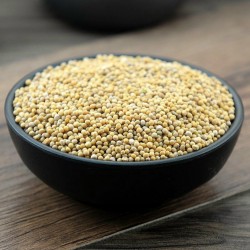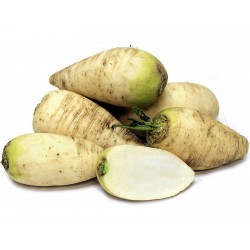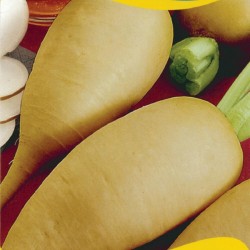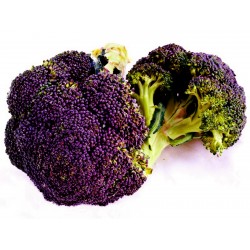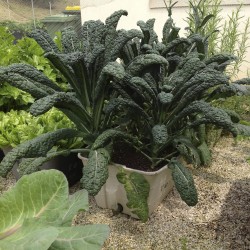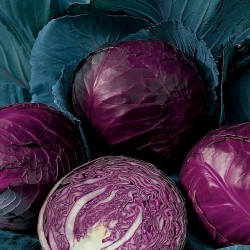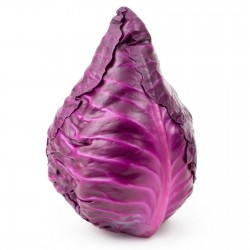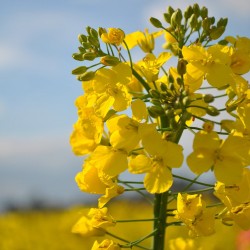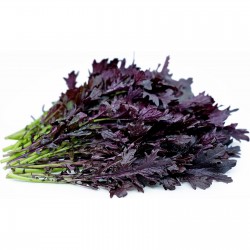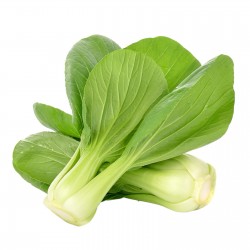Seeds Gallery Com,
5/
5
<meta http-equiv="Content-Type" content="text/html; charset=UTF-8" />
<h2><strong>Rapeseed seeds (Brassica napus subsp. napus)</strong></h2>
<h2><span style="color: #ff0000;"><strong>Price for Package of 20 seeds.</strong></span></h2>
<p><b>Rapeseed</b><span> (</span><i>Brassica napus<span> </span></i><span>subsp.</span><i><span> </span>napus</i><span>) is a bright-yellow flowering member of the family </span>Brassicaceae<span> (mustard or cabbage family), cultivated mainly for its oil-rich seed, which naturally contains appreciable amounts of toxic </span>erucic acid<span>. </span><b>Canola</b><span> are a group of </span><i>rapeseed</i><span> </span>cultivars<span> which were bred to have very low levels of </span>erucic acid<span> and are especially prized for use for human and animal food. </span><i>Rapeseed</i><span> is the third-largest source of </span>vegetable oil<span> and second-largest source of protein meal in the world.</span></p>
<h2><span class="mw-headline" id="Etymology_and_taxonomy">Etymology and taxonomy</span></h2>
<p>The term "rape" derives from the Latin word for<span> </span>turnip,<span> </span><i>rapa</i><span> </span>or<span> </span><i>rapum</i>, cognate with the Greek word<span> </span><i>rhapys</i>.<sup id="cite_ref-FOOTNOTEOED2016_3-0" class="reference">[2]</sup></p>
<p>The<span> </span>species<span> </span><i>Brassica napus</i><span> </span>belongs to the flowering plant family<span> </span>Brassicaceae. Rapeseed is a<span> </span>subspecies<span> </span>with the<span> </span>autonym<span> </span><i>B. napus<span> </span></i>subsp.<i><span> </span>napus</i>.<sup id="cite_ref-FOOTNOTEGRIN2012a_4-0" class="reference">[3]</sup><span> </span>It encompasses winter and spring oilseed, vegetable and fodder rape.<sup id="cite_ref-FOOTNOTESnowdonLühsFriedt200654_5-0" class="reference">[4]</sup><span> </span>Siberian kale is a distinct leaf rape form<span> </span>variety<span> </span>(<i>B. napus<span> </span></i>var.<i><span> </span>pabularia</i>) which used to be common as a winter-annual vegetable.<sup id="cite_ref-FOOTNOTEGRIN2010b_6-0" class="reference">[5]</sup><sup id="cite_ref-FOOTNOTESnowdonLühsFriedt200654_5-1" class="reference">[4]</sup><span> </span>The second subspecies of<span> </span><i>B. napus</i><span> </span>is<span> </span><i>B. napus<span> </span></i>subsp.<i><span> </span>rapifera</i><span> </span>(also subsp.<span> </span><i>napobrassica</i>; the rutabaga, swede, or yellow turnip).<sup id="cite_ref-FOOTNOTEGRIN2012b_7-0" class="reference">[6]</sup><sup id="cite_ref-FOOTNOTENCBI2013_8-0" class="reference">[7]</sup></p>
<p><i>Brassica napus</i><span> </span>is an digenomic<span> </span>amphidiploid<span> </span>that occurred due to the<span> </span>interspecific hybridization<span> </span>between<span> </span><i>Brassica oleracea</i><span> </span>and<span> </span><i>Brassica rapa</i>.<sup id="cite_ref-FOOTNOTEDowneyRimmer19936_9-0" class="reference">[8]</sup><span> </span>It is a self-compatible pollinating species like the other amphidiploid<span> </span><i>brassica</i><span> </span>species.<sup id="cite_ref-FOOTNOTEDowneyRimmer19937_10-0" class="reference">[9]</sup></p>
<h2><span class="mw-headline" id="Description">Description</span></h2>
<div class="thumb tright">
<div class="thumbinner"><img alt="Rapeseed seeds (Brassica napus subsp. napus)" src="https://upload.wikimedia.org/wikipedia/commons/thumb/c/ce/Brassica_napus_2.jpg/220px-Brassica_napus_2.jpg" decoding="async" width="220" height="354" class="thumbimage" srcset="//upload.wikimedia.org/wikipedia/commons/thumb/c/ce/Brassica_napus_2.jpg/330px-Brassica_napus_2.jpg 1.5x, //upload.wikimedia.org/wikipedia/commons/thumb/c/ce/Brassica_napus_2.jpg/440px-Brassica_napus_2.jpg 2x" data-file-width="1204" data-file-height="1936" title="Rapeseed seeds (Brassica napus subsp. napus)" />
<div class="thumbcaption">
<div class="magnify"></div>
Rapeseed blossoms</div>
</div>
</div>
<div class="thumb tright">
<div class="thumbinner"><img alt="Rapeseed seeds (Brassica napus subsp. napus)" src="https://upload.wikimedia.org/wikipedia/commons/thumb/e/e0/Brassica_napus_fruit7_%2814678237321%29.jpg/220px-Brassica_napus_fruit7_%2814678237321%29.jpg" decoding="async" width="220" height="339" class="thumbimage" srcset="//upload.wikimedia.org/wikipedia/commons/thumb/e/e0/Brassica_napus_fruit7_%2814678237321%29.jpg/330px-Brassica_napus_fruit7_%2814678237321%29.jpg 1.5x, //upload.wikimedia.org/wikipedia/commons/thumb/e/e0/Brassica_napus_fruit7_%2814678237321%29.jpg/440px-Brassica_napus_fruit7_%2814678237321%29.jpg 2x" data-file-width="1720" data-file-height="2652" title="Rapeseed seeds (Brassica napus subsp. napus)" />
<div class="thumbcaption">
<div class="magnify"></div>
Rapeseed pod with seeds inside</div>
</div>
</div>
<div class="thumb tright">
<div class="thumbinner"><img alt="Rapeseed seeds (Brassica napus subsp. napus)" src="https://upload.wikimedia.org/wikipedia/commons/thumb/4/44/%D0%A1%D0%B5%D0%BC%D0%B5%D1%87%D0%BA%D0%BE_%D1%80%D0%B0%D0%BF%D1%81%D0%B0.jpg/220px-%D0%A1%D0%B5%D0%BC%D0%B5%D1%87%D0%BA%D0%BE_%D1%80%D0%B0%D0%BF%D1%81%D0%B0.jpg" decoding="async" width="220" height="220" class="thumbimage" srcset="//upload.wikimedia.org/wikipedia/commons/thumb/4/44/%D0%A1%D0%B5%D0%BC%D0%B5%D1%87%D0%BA%D0%BE_%D1%80%D0%B0%D0%BF%D1%81%D0%B0.jpg/330px-%D0%A1%D0%B5%D0%BC%D0%B5%D1%87%D0%BA%D0%BE_%D1%80%D0%B0%D0%BF%D1%81%D0%B0.jpg 1.5x, //upload.wikimedia.org/wikipedia/commons/thumb/4/44/%D0%A1%D0%B5%D0%BC%D0%B5%D1%87%D0%BA%D0%BE_%D1%80%D0%B0%D0%BF%D1%81%D0%B0.jpg/440px-%D0%A1%D0%B5%D0%BC%D0%B5%D1%87%D0%BA%D0%BE_%D1%80%D0%B0%D0%BF%D1%81%D0%B0.jpg 2x" data-file-width="5772" data-file-height="5772" title="Rapeseed seeds (Brassica napus subsp. napus)" />
<div class="thumbcaption">
<div class="magnify"></div>
Rapeseed seed under a microscope.</div>
</div>
</div>
<p><i>Brassica napus</i><span> </span>grows to 100 cm (39 in) in height with hairless, fleshy,<span> </span>pinnatifid<span> </span>and<span> </span>glaucous<span> </span>lower leaves<sup id="cite_ref-FOOTNOTEMartin1965_11-0" class="reference">[10]</sup><sup id="cite_ref-FOOTNOTEParnellCurtisWebb2012_12-0" class="reference">[11]</sup><sup id="cite_ref-FOOTNOTEWebbParnellDoogue1996_13-0" class="reference">[12]</sup><span> </span>which are stalked whereas the upper leaves have no<span> </span>petioles.<sup id="cite_ref-FOOTNOTECallihanBrennanMillerBrown20006_14-0" class="reference">[13]</sup><span> </span><i>Brassica napus</i><span> </span>can be distinguished from<span> </span><i>Brassica nigra</i><span> </span>by the upper leaves which do not clasp the stem, and from<span> </span><i>Brassica rapa</i><span> </span>by its smaller petals which are less than 13 mm (0.51 in) across.<sup id="cite_ref-FOOTNOTEParnellCurtisWebb2012_12-1" class="reference">[11]</sup></p>
<p>Rapeseed flowers are yellow and about 17 mm (0.67 in) across.<sup id="cite_ref-FOOTNOTEParnellCurtisWebb2012_12-2" class="reference">[11]</sup><span> </span>They are radial and consist of four<span> </span>petals<span> </span>in a typical cross-form, alternating with four<span> </span>sepals. They have indeterminate<span> </span>racemose<span> </span>flowering starting at the lowest bud and growing upward in the following days. The flowers have two lateral<span> </span>stamens<span> </span>with short filaments, and four median stamens with longer filaments whose anthers split away from the flower's center upon flowering.<sup id="cite_ref-FOOTNOTESnowdonLühsFriedt200656_15-0" class="reference">[14]</sup></p>
<p>The rapeseed pods are green and elongated<span> </span>siliquae<span> </span>during development that eventually ripen to brown. They grow on<span> </span>pedicels<span> </span>1 to 3 cm long, and can range from 5 to 10 cm in length.<sup id="cite_ref-FOOTNOTECallihanBrennanMillerBrown20006_14-1" class="reference">[13]</sup><span> </span>Each pod has two<span> </span>compartments<span> </span>separated by an inner central wall within which a row of seeds develop.<sup id="cite_ref-FOOTNOTEAlford20081–2_16-0" class="reference">[15]</sup><span> </span>The seeds are round and have a diameter of 1.5 to 3mm. They have a reticulate surface texture,<sup id="cite_ref-FOOTNOTECallihanBrennanMillerBrown20006_14-2" class="reference">[13]</sup><span> </span>and are black and hard at maturity.<sup id="cite_ref-FOOTNOTEAlford20081–2_16-1" class="reference">[15]</sup></p>
<h2><span class="mw-headline" id="Ecology">Ecology</span></h2>
<p>In<span> </span>Northern Ireland, U K<span> </span><i>B. napus</i><span> </span>and<span> </span><i>B. rapa</i><span> </span>are recorded as escapes in roadside verges and waste ground.<sup id="cite_ref-FOOTNOTEBeesleyWilde1997104_17-0" class="reference">[16]</sup></p>
<h2><span class="mw-headline" id="Uses">Uses</span></h2>
<div class="thumb tright">
<div class="thumbinner"><img alt="Rapeseed seeds (Brassica napus subsp. napus)" src="https://upload.wikimedia.org/wikipedia/commons/thumb/9/94/Rapeseed%2C_roasted.jpg/220px-Rapeseed%2C_roasted.jpg" decoding="async" width="220" height="215" class="thumbimage" srcset="//upload.wikimedia.org/wikipedia/commons/thumb/9/94/Rapeseed%2C_roasted.jpg/330px-Rapeseed%2C_roasted.jpg 1.5x, //upload.wikimedia.org/wikipedia/commons/thumb/9/94/Rapeseed%2C_roasted.jpg/440px-Rapeseed%2C_roasted.jpg 2x" data-file-width="3021" data-file-height="2948" title="Rapeseed seeds (Brassica napus subsp. napus)" />
<div class="thumbcaption">
<div class="magnify"></div>
Roasted canola seeds</div>
</div>
</div>
<p>Rapeseed is grown for the production of<span> </span>animal feed, edible<span> </span>vegetable oils, and<span> </span>biodiesel. Rapeseed was the third-leading source of vegetable oil in the world in 2000, after<span> </span>soybean<span> </span>and<span> </span>palm oil.<sup id="cite_ref-FOOTNOTEUSDA200226_18-0" class="reference">[17]</sup><span> </span>It is the world's second-leading source of<span> </span>protein<span> </span>meal after soybean.<sup id="cite_ref-FOOTNOTEHeuzéTranSauvantLessire2020_19-0" class="reference">[18]</sup></p>
<h3><span class="mw-headline" id="Animal_feed">Animal feed</span></h3>
<p>Processing of rapeseed for oil production produces rapeseed meal as a byproduct. The byproduct is a high-protein animal feed, competitive with soybean. The feed is employed mostly for<span> </span>cattle<span> </span>feeding, but is also used for<span> </span>pigs<span> </span>and<span> </span>poultry.<sup id="cite_ref-FOOTNOTEHeuzéTranSauvantLessire2020_19-1" class="reference">[18]</sup><span> </span>However, natural rapeseed oil contains 50%<span> </span>erucic acid<span> </span>and high levels of<span> </span>glucosinolates<span> </span>that significantly lowers the nutritional value of rapeseed press cakes for animal feed.<sup id="cite_ref-FOOTNOTEPottsRakowMales1999_20-0" class="reference">[19]</sup></p>
<h3><span class="mw-headline" id="Vegetable_oil">Vegetable oil</span></h3>
<p>Rapeseed oil is one of the oldest known vegetable oils, but historically was used in limited quantities due to high levels of erucic acid, which is damaging to<span> </span>cardiac muscle<span> </span>of animals, and glucosinolates, which made it less nutritious in animal feed.<sup id="cite_ref-FOOTNOTEO'Brien200837_21-0" class="reference">[20]</sup><span> </span>Rapeseed oil can contain up to 54% erucic acid.<sup id="cite_ref-FOOTNOTESahasrabudhe1977323_22-0" class="reference">[21]</sup><span> </span>Food-grade canola oil derived from rapeseed cultivars, also known as rapeseed 00 oil, low erucic acid rapeseed oil, LEAR oil, and rapeseed canola-equivalent oil, has been<span> </span>generally recognized as safe<span> </span>by the<span> </span>United States Food and Drug Administration.<sup id="cite_ref-FOOTNOTEUSFDA2010_23-0" class="reference">[22]</sup><span> </span>Canola oil is limited by government regulation to a maximum of 2% erucic acid by weight in the USA<sup id="cite_ref-FOOTNOTEUSFDA2010_23-1" class="reference">[22]</sup><span> </span>and 5% in the EU,<sup id="cite_ref-FOOTNOTEEC1980_24-0" class="reference">[23]</sup><span> </span>with special regulations for infant food. These low levels of erucic acid are not believed to cause harm in human<span> </span>infants.<sup id="cite_ref-FOOTNOTEUSFDA2010_23-2" class="reference">[22]</sup><sup id="cite_ref-FOOTNOTEEC1980_24-1" class="reference">[23]</sup></p>
<h3><span class="mw-headline" id="Biodiesel">Biodiesel</span></h3>
<p>Rapeseed oil is used as diesel fuel, either as<span> </span>biodiesel, straight in heated fuel systems, or blended with petroleum distillates for powering motor vehicles. Biodiesel may be used in pure form in newer engines without engine damage and is frequently combined with fossil-fuel<span> </span>diesel<span> </span>in ratios varying from 2% to 20% biodiesel. Owing to the costs of growing, crushing, and refining rapeseed biodiesel, rapeseed-derived biodiesel from new oil costs more to produce than standard diesel fuel, so diesel fuels are commonly made from the used oil. Rapeseed oil is the preferred oil stock for biodiesel production in most of Europe, accounting for about 80% of the feedstock,<sup class="noprint Inline-Template Template-Fact">[<i><span title="This claim needs references to reliable sources. (April 2020)">citation needed</span></i>]</sup><span> </span>partly because rapeseed produces more oil per unit of land area compared to other oil sources, such as soybeans, but primarily because canola oil has a significantly lower<span> </span>gel point<span> </span>than most other vegetable oils.</p>
<h3><span class="mw-headline" id="Other">Other</span></h3>
<p>Rapeseed is also used as a<span> </span>cover crop<span> </span>in the US during the winter as it prevents<span> </span>soil erosion, produces large amounts of<span> </span>biomass, suppresses weeds and can improve soil<span> </span>tilth<span> </span>with its root system. Some cultivars of rapeseed are also used as annual forage and are ready for grazing livestock 80 to 90 days after planting.<sup id="cite_ref-FOOTNOTEAgMRC2018_25-0" class="reference"></sup></p>
<p>Rapeseed has a high<span> </span>melliferous<span> </span>potential and is a main forage crop for<span> </span>honeybees.<sup id="cite_ref-FOOTNOTEBertazziniForlani20162_26-0" class="reference">[25]</sup><span> </span>Monofloral rapeseed honey has a whitish or milky yellow color, peppery taste and, due to its fast crystallization time, a soft-solid texture. It crystallizes within 3 to 4 weeks and can ferment over time if stored improperly.<sup id="cite_ref-FOOTNOTELixandru2017_27-0" class="reference">[26]</sup><span> </span>The low fructose-to-glucose ratio in<span> </span>monofloral rapeseed honey<span> </span>causes it to quickly granulate in the<span> </span>honeycomb, forcing beekeepers to extract the honey within 24 hours of it being capped.<sup id="cite_ref-FOOTNOTEBertazziniForlani20162_26-1" class="reference">[25]</sup></p>
<p>As a<span> </span>biolubricant, rapeseed has possible uses for bio-medical applications (e.g., lubricants for artificial joints) and the use of personal lubricant for sexual purposes.<sup id="cite_ref-FOOTNOTESalimonSalihYousif2010522_28-0" class="reference">[27]</sup><span> </span>Biolubricant containing 70% or more canola/rapeseed oil has replaced petroleum-based chainsaw oil in Austria although they are typically more expensive.<sup id="cite_ref-FOOTNOTEGarrett1998_29-0" class="reference">[28]</sup></p>
<p>Rapeseed has been researched as a means of containing<span> </span>radionuclides<span> </span>that contaminated the soil after the<span> </span>Chernobyl disaster<sup id="cite_ref-FOOTNOTESmith2004_30-0" class="reference">[29]</sup><sup id="cite_ref-FOOTNOTERIA_Novosti2010_31-0" class="reference">[30]</sup><sup id="cite_ref-FOOTNOTEWalker2010_32-0" class="reference">[31]</sup><span> </span>as it has a rate of uptake up to three times more than other grains, and only about 3 to 6% of the radionuclides go into the oilseeds.<sup id="cite_ref-FOOTNOTESmith2004_30-1" class="reference">[29]</sup></p>
<p>Rapeseed meal is mostly used as a soil fertilizer rather than for animal feed in<span> </span>China.<sup id="cite_ref-FOOTNOTEBonjeanDequidtSangLimagrain20166_33-0" class="reference">[32]</sup></p>
<h2><span class="mw-headline" id="Cultivation">Cultivation</span></h2>
<div class="thumb tright">
<div class="thumbinner"><img alt="Rapeseed seeds (Brassica napus subsp. napus)" src="https://upload.wikimedia.org/wikipedia/commons/thumb/1/10/Champ_de_colza_C%C3%B4te-d%27Or_Bourgogne_avril_2014.jpg/220px-Champ_de_colza_C%C3%B4te-d%27Or_Bourgogne_avril_2014.jpg" decoding="async" width="220" height="137" class="thumbimage" srcset="//upload.wikimedia.org/wikipedia/commons/thumb/1/10/Champ_de_colza_C%C3%B4te-d%27Or_Bourgogne_avril_2014.jpg/330px-Champ_de_colza_C%C3%B4te-d%27Or_Bourgogne_avril_2014.jpg 1.5x, //upload.wikimedia.org/wikipedia/commons/thumb/1/10/Champ_de_colza_C%C3%B4te-d%27Or_Bourgogne_avril_2014.jpg/440px-Champ_de_colza_C%C3%B4te-d%27Or_Bourgogne_avril_2014.jpg 2x" data-file-width="4208" data-file-height="2626" title="Rapeseed seeds (Brassica napus subsp. napus)" />
<div class="thumbcaption">
<div class="magnify"></div>
Field of rapeseed</div>
</div>
</div>
<p>Crops from the genus<span> </span><i>Brassica</i>, including rapeseed, were among the earliest plants to be widely cultivated by mankind as early as 10,000 years ago. Rapeseed was being cultivated in India as early as 4000 B.C. and it spread to China and Japan 2000 years ago.<sup id="cite_ref-FOOTNOTESnowdonLühsFriedt200654_5-2" class="reference">[4]</sup></p>
<p>Rapeseed oil is predominantly cultivated in its winter form in most of Europe and Asia due to the requirement of<span> </span>vernalization<span> </span>to start the process of flowering. It is sown in autumn and remains in a<span> </span>leaf rosette<span> </span>on the soil surface during the winter. The plant grows a long vertical stem in the next spring followed by lateral branch development. It generally flowers in late spring with the process of pod development and ripening occurring over a period of 6–8 weeks until<span> </span>midsummer.<sup id="cite_ref-FOOTNOTESnowdonLühsFriedt200656_15-1" class="reference">[14]</sup></p>
<p>In Europe, winter rapeseed is grown as an annual break crop in three to four-year rotations with cereals such as<span> </span>wheat<span> </span>and<span> </span>barley, and break crops such as<span> </span>peas<span> </span>and<span> </span>beans. This is done to reduce the possibility of pests and diseases being carried over from one crop to another.<sup id="cite_ref-FOOTNOTEAlford20083_34-0" class="reference">[33]</sup><span> </span>Winter rape is less susceptible to<span> </span>crop failure<span> </span>as it is more vigorous than the summer variety and can compensate for damage done by pests.<sup id="cite_ref-FOOTNOTEAlford20084_35-0" class="reference">[34]</sup></p>
<p>Spring rapeseed is cultivated in Canada, northern Europe and Australia as it is not winter-hardy and does not require vernalization. The crop is sown in spring with stem development happening immediately after<span> </span>germination.<sup id="cite_ref-FOOTNOTESnowdonLühsFriedt200656_15-2" class="reference">[14]</sup></p>
<p>Rapeseed can be cultivated on a wide variety of well-drained soils, prefers a<span> </span>pH<span> </span>between 5.5 and 8.3 and has a moderate tolerance of<span> </span>soil salinity.<sup id="cite_ref-FOOTNOTEAgMRC2018_25-1" class="reference">[24]</sup><span> </span>It is predominantly a<span> </span>wind-pollinated<span> </span>plant but shows significantly increased grain yields when<span> </span>bee-pollinated,<sup id="cite_ref-FOOTNOTEChambóDe_OliveiraGarciaDuarte-Júnior20142087_36-0" class="reference">[35]</sup><span> </span>almost double the final yield<sup id="cite_ref-FOOTNOTEBertazziniForlani20162_26-2" class="reference">[25]</sup><span> </span>but the effect is cultivar-dependent.<sup id="cite_ref-FOOTNOTELindströmHerbertssonRundlöfSmith2015759_37-0" class="reference">[36]</sup><span> </span>It is currently grown with high levels of nitrogen-containing fertilisers, and the manufacture of these generates<span> </span>N<sub>2</sub>O. An estimated 3-5% of nitrogen provided as fertilizer for rapeseed is converted to N<sub>2</sub>O.<sup id="cite_ref-FOOTNOTELewis_Jr.2007_38-0" class="reference">[37]</sup></p>
<h2><span class="mw-headline" id="Diseases_and_pests">Diseases and pests</span></h2>
<p>The main diseases of the winter rapeseed crop are<span> </span><i>canker</i>,<span> </span><i>light leaf spot</i>,<span> </span><i>alternaria</i><span> </span>and<span> </span><i>sclerotinia<span> </span>stem rot</i>. Canker causes<span> </span>leaf spotting, and premature ripening and weakening of the stem during the autumn-winter period. A conazole or<span> </span>triazole<span> </span>fungicide<span> </span>treatment is required in late autumn and in spring against<span> </span><i>canker</i><span> </span>while broad-spectrum fungicides are used during the spring-summer period for alternaria and sclerotinia control.<sup id="cite_ref-FOOTNOTEAlford20087_39-0" class="reference">[38]</sup><span> </span>Oilseed rape cannot be planted in close rotation with itself due to soil-borne diseases such as<span> </span><i>sclerotinia</i>,<span> </span><i>verticillium wilt</i><span> </span>and<span> </span>clubroot.<sup id="cite_ref-FOOTNOTEAlford20083_34-1" class="reference">[33]</sup></p>
<h3><span class="mw-headline" id="Pests">Pests</span></h3>
<p>Rapeseed is attacked by a wide variety of insects,<span> </span>nematodes,<span> </span>slugs<span> </span>as well as<span> </span>wood pigeons.<sup id="cite_ref-FOOTNOTEAlford20086_40-0" class="reference">[39]</sup><span> </span>The<span> </span><i>brassica pod midge</i>,<span> </span><i>cabbage seed weevil</i>,<span> </span><i>cabbage stem weevil</i>,<span> </span><i>cabbage stem flea beetle</i>,<span> </span><i>rape stem weevil</i><span> </span>and<span> </span><i>pollen beetles</i><span> </span>are the primary insect pests that prey on the oilseed rape crop in Europe.<sup id="cite_ref-FOOTNOTEAlford20089_41-0" class="reference">[40]</sup><span> </span>The insect pests can feed on developing pods to lay eggs inside and eat the developing seeds, bore into the plant's stem and feed on pollen, leaves and flowers. Synthetic<span> </span>pyrethroid<span> </span>insecticides<span> </span>are the main attack vector against insect pests though there is a large-scale use of<span> </span>prophylactic<span> </span>insecticides in many countries.<sup id="cite_ref-FOOTNOTEAlford20087_39-1" class="reference">[38]</sup><span> </span>Molluscicide<span> </span>pellets are used either before or after sowing of the rapeseed crop to protect against slugs.<sup id="cite_ref-FOOTNOTEAlford20086_40-1" class="reference">[39]</sup></p>
<h2><span class="mw-headline" id="History_of_the_cultivars">History of the cultivars</span></h2>
<p>In 1973, Canadian<span> </span>agricultural scientists<span> </span>launched a marketing campaign to promote<span> </span>canola<span> </span>consumption.<sup id="cite_ref-FOOTNOTEThiyam-HolländerEskinMatthäus20134_42-0" class="reference">[41]</sup><span> </span>Seed, oil and protein meal derived from rapeseed cultivars which is low in erucic acid and low in glucosinolates was originally registered as a trademark, in 1978, of the Canola Council of Canada, as "canola".<sup id="cite_ref-FOOTNOTEMag1983380_43-0" class="reference">[42]</sup><sup id="cite_ref-FOOTNOTERoché20155_44-0" class="reference">[43]</sup><span> </span>This is now a generic term for edible varieties of rapeseed but is still officially defined in Canada as rapeseed oil that "must contain less than 2% erucic acid and less than 30 µmol of glucosinolates per gram of air-dried oil-free meal."<sup id="cite_ref-FOOTNOTERoché20155_44-1" class="reference">[43]</sup><sup id="cite_ref-FOOTNOTECFIA2017_45-0" class="reference">[44]</sup></p>
<p>Following the<span> </span>European Parliament's<span> </span>Transport Biofuels Directive<span> </span>in 2003 promoting the use of biofuels, the cultivation of winter rapeseed increased dramatically in Europe.<sup id="cite_ref-FOOTNOTEBertazziniForlani20162_26-3" class="reference">[25]</sup></p>
<p>Bayer Cropscience, in collaboration with<span> </span>BGI-Shenzhen, China, Keygene N.V., the Netherlands, and the University of Queensland, Australia, announced it had sequenced the entire genome of<span> </span><i>B. napus</i><span> </span>and its constituent genomes present in<span> </span><i>B. rapa</i><span> </span>and<span> </span><i>B. oleracea</i><span> </span>in 2009. The "A" genome component of the amphidiploid rapeseed species<span> </span><i>B. napus</i><span> </span>is currently being sequenced by the Multinational<span> </span><i>Brassica</i><span> </span>Genome Project.<sup id="cite_ref-46" class="reference">[45]</sup><sup class="noprint Inline-Template">[<i><span title="The text near this tag is dated. (November 2010)">needs update</span></i>]</sup></p>
<p>A<span> </span>genetically modified-for-glyphosate-tolerance variety of rapeseed which was developed in 1998 is considered to be the most disease- and drought-resistant canola. By 2009, 90% of the rapeseed crops planted in Canada were of this sort,<sup id="cite_ref-FOOTNOTEBeckieHarkerLégèreMorrison201143_47-0" class="reference">[46]</sup><span> </span>adoption of which, however, has not been free of controversy.</p>
<h3><span class="mw-headline" id="GMO_controversy">GMO controversy</span></h3>
<div role="note" class="hatnote navigation-not-searchable">Main article:<span> </span>Roundup Ready Canola</div>
<p>The<span> </span>Monsanto<span> </span>company<span> </span>genetically engineered<span> </span>new cultivars of rapeseed to be resistant to the effects of its<span> </span>herbicide,<span> </span>Roundup. In 1998, they brought this to the Canadian market. Monsanto sought compensation from farmers found to have crops of this cultivar in their fields without paying a license fee. However, these farmers claimed that the pollen containing the<span> </span><i>Roundup Ready</i><span> </span>gene was blown into their fields and crossed with unaltered canola. Other farmers claimed that after spraying Roundup in non-canola fields to kill weeds before planting,<span> </span><i>Roundup Ready</i><span> </span>volunteers<span> </span>were left behind, causing extra expense to rid their fields of the weeds.<sup id="cite_ref-FOOTNOTEHartley2008_48-0" class="reference">[47]</sup></p>
<p>In a closely followed legal battle, the<span> </span>Supreme Court of Canada<span> </span>found in favor of Monsanto's<span> </span>patent infringement<span> </span>claim for unlicensed growing of<span> </span><i>Roundup Ready</i><span> </span>in its 2004 ruling on<span> </span><i>Monsanto Canada Inc. v. Schmeiser</i>, but also ruled that Schmeiser was not required to pay any damages. The case garnered international controversy, as a court-sanctioned legitimization for the global patent protection of<span> </span>genetically modified crops. In March 2008, an<span> </span>out-of-court settlement<span> </span>between Monsanto and Schmeiser agreed that Monsanto would clean up the entire GMO-canola crop on Schmeiser's farm, at a cost of about CAD $660.<sup id="cite_ref-FOOTNOTEHartley2008_48-1" class="reference">[47]</sup></p>
<h2><span class="mw-headline" id="Production">Production</span></h2>
<p>The<span> </span>Food and Agriculture Organization<span> </span>reports global production of 36 million tons of rapeseed in the 2003–2004 season, and an estimated 58.4 million tons in the 2010–2011 season.<sup id="cite_ref-49" class="reference">[48]</sup></p>
<p>Worldwide production of rapeseed (including canola) has increased sixfold between 1975 and 2007. The production of canola and rapeseed since 1975 has opened up the edible oil market for rapeseed oil. Since 2002, production of biodiesel has been steadily increasing in EU and USA to 6 million metric tons in 2006. Rapeseed oil is positioned to supply a good portion of the vegetable oils needed to produce that fuel. World production was thus expected to trend further upward between 2005 and 2015 as biodiesel content requirements in Europe go into effect.<sup id="cite_ref-50" class="reference">[</sup></p>
VE 134 (20 S)
